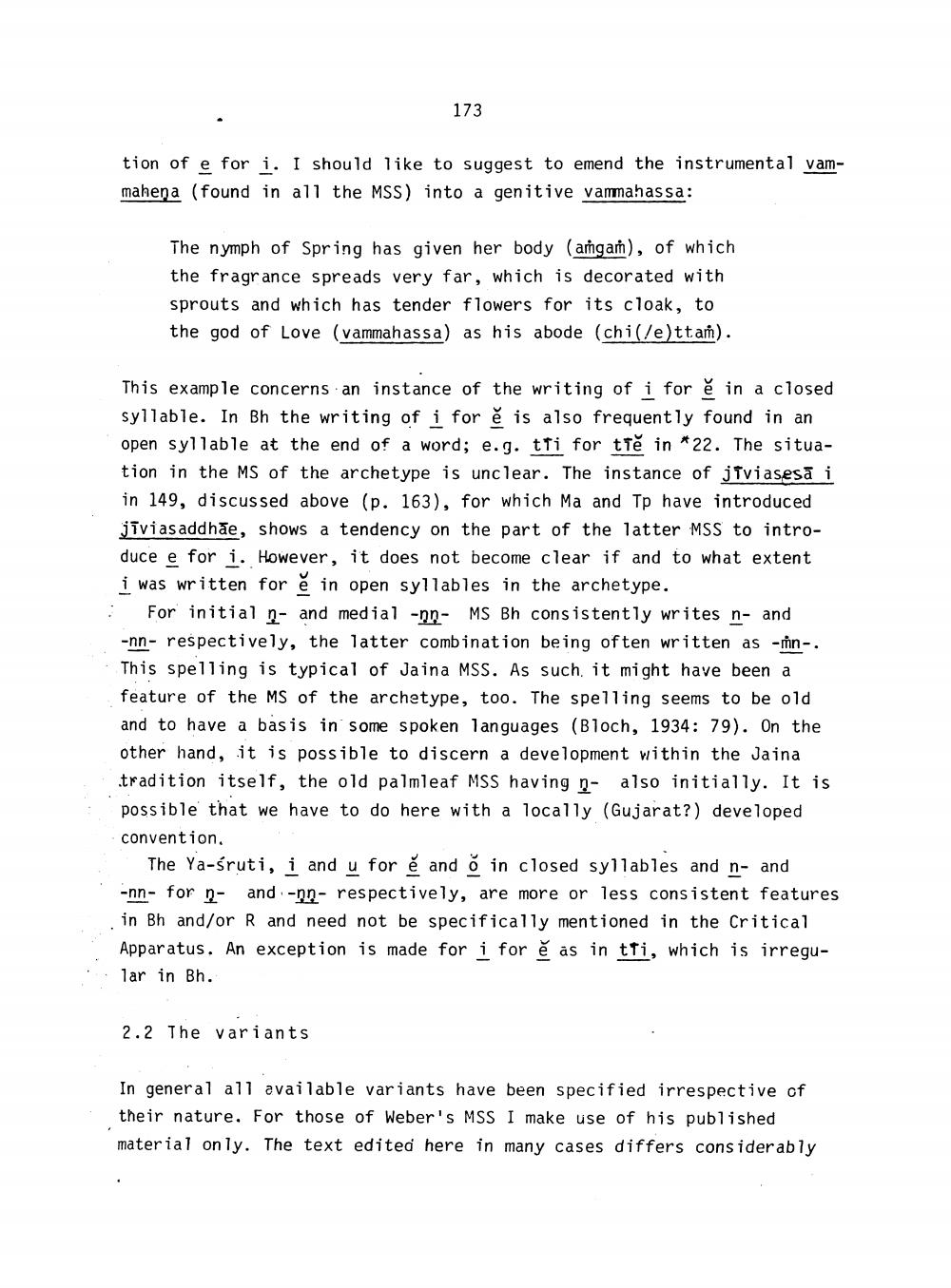________________
173
tion of e for i. I should like to suggest to emend the instrumental vammahena (found in all the MSS) into a genitive vammahassa:
The nymph of Spring has given her body (amgaṁ), of which the fragrance spreads very far, which is decorated with sprouts and which has tender flowers for its cloak, to the god of Love (vammahassa) as his abode (chi(!e)ttaṁ).
This example concerns an instance of the writing of i for è in a closed syllable. In Bh the writing of i for ě is also frequently found in an open syllable at the end of a word; e.g. tfi for tTě in *22. The situation in the MS of the archetype is unclear. The instance of jiviasesā i in 149, discussed above (p. 163), for which Ma and Tp have introduced jivias addhãe, shows a tendency on the part of the latter MSS to introduce e for i. However, it does not become clear if and to what extent i was written for è in open syllables in the archetype.
For initial n- and medial -nn- MS Bh consistently writes n- and -nn- respectively, the latter combination being often written as -rinThis spelling is typical of Jaina MSS. As such, it might have been a feature of the MS of the archetype, too. The spelling seems to be old and to have a basis in some spoken languages (Bloch, 1934: 79). On the other hand, it is possible to discern a development within the Jaina tradition itself, the old palmleaf MSS having n- also initially. It is possible that we have to do here with a locally (Gujarat?) developed convention.
The Ya-śruti, i and u for ě and o in closed syllables and n- and -nn- for n- and -nn- respectively, are more or less consistent features in Bh and/or R and need not be specifically mentioned in the critical Apparatus. An exception is made for i for čas in tti, which is irregular in Bh.
2.2 The variants
In general all available variants have been specified irrespective of their nature. For those of Weber's MSS I make use of his published material only. The text edited here in many cases differs considerably




